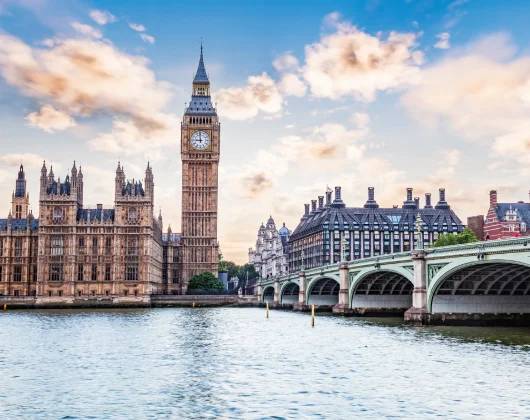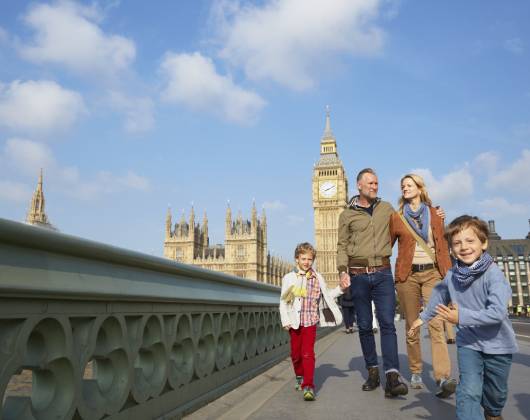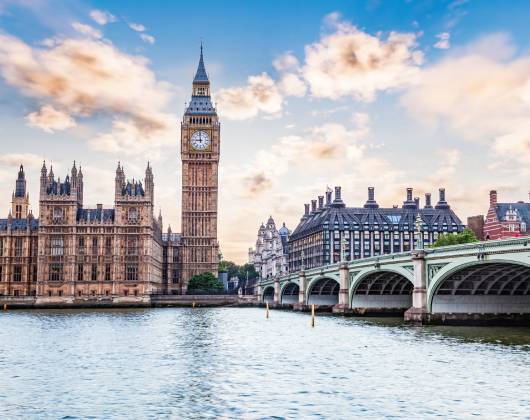Transportation in the United Kingdom
Navigate the UK with Ease
Your comprehensive guide to transportation options in the United Kingdom

Getting Around the UK
The United Kingdom boasts one of the most comprehensive and efficient public transportation systems in the world. Whether you're exploring the bustling streets of London, the historic cities of Edinburgh and York, or the picturesque countryside of the Lake District, there are numerous transportation options to help you navigate with ease.
This guide provides essential information on the various transportation options available in the UK, including trains, buses, the London Underground, taxis, car rentals, and more. We'll also share practical tips on how to save money, navigate efficiently, and make the most of your travel experience in the UK.
Understanding the UK's transportation system will not only save you time and money but also enhance your overall travel experience by allowing you to explore more destinations with confidence.
The London Underground
Navigate London's iconic subway system like a local

The Tube: London's Lifeline
The London Underground, commonly known as "the Tube," is the oldest underground railway network in the world and serves as the lifeline of London's transportation system. With 11 lines covering 270 stations across London, it's the fastest and most efficient way to travel around the city.
Oyster Cards and Contactless Payment
The most convenient and cost-effective way to use the Tube is with an Oyster card or a contactless payment card:
- Oyster Card: A reloadable smartcard that you can use on all public transport in London. Purchase one at any Tube station for a £5 refundable deposit.
- Contactless Payment: Most major credit and debit cards with contactless functionality work on London's transport system, charging the same fares as an Oyster card.
- Mobile Payment: Apple Pay, Google Pay, and Samsung Pay are also accepted.
Navigating the Tube
The Tube map is color-coded by line, making it easy to navigate. Here are some tips:
- Download the official TfL (Transport for London) app or Citymapper for real-time updates and journey planning.
- Avoid rush hours (7:30-9:30 AM and 5:00-7:00 PM on weekdays) if possible.
- "Mind the gap" between the train and the platform - a famous London Underground announcement.
- Stand on the right side of escalators to allow people to walk past on the left.
- The Tube generally operates from around 5:00 AM until midnight, with extended hours on Friday and Saturday nights on some lines (Night Tube).
Travel Zones
London is divided into 9 travel zones, with Zone 1 covering central London and Zone 9 being the outermost zone. Fares increase the more zones you travel through. Most tourist attractions are located in Zones 1 and 2.
Money-Saving Tip
Consider purchasing a Visitor Oyster Card before your trip or a Travelcard if you plan to use public transport extensively. Daily capping on Oyster and contactless payments ensures you never pay more than the price of a day ticket.
Trains in the UK
Explore Britain by rail - a comfortable and scenic way to travel

The National Rail Network
The UK has an extensive rail network connecting major cities, towns, and many rural areas. Trains are a comfortable and scenic way to travel between destinations, often faster than driving, especially for long distances.
Booking Train Tickets
Train tickets in the UK can be expensive if purchased on the day of travel. To save money:
- Book in Advance: Tickets are usually released 12 weeks before the travel date, with the cheapest fares available early.
- Use Rail Cards: If eligible, consider purchasing a railcard (such as the 16-25, Two Together, or Senior Railcard) for 1/3 off most fares.
- Split Tickets: Sometimes buying separate tickets for different segments of your journey can be cheaper than a single ticket.
- Off-Peak Travel: Travel outside rush hours for cheaper fares.
Major Train Operators
The UK rail network is operated by several private companies, each serving different regions:
- LNER: East Coast Main Line (London to Edinburgh/Aberdeen/Inverness)
- Avanti West Coast: West Coast Main Line (London to Glasgow/Edinburgh/Liverpool/Manchester)
- Great Western Railway: Services to South West England and Wales
- Southern: Services in South London and South East England
- ScotRail: Services within Scotland
Booking Platforms
You can book train tickets through:
- National Rail website or app
- Trainline website or app
- Individual train operator websites
- Ticket offices at stations
- Self-service machines at stations
Pro Tip
The Trainline app allows you to store your tickets digitally on your phone, eliminating the need for paper tickets. It also provides real-time updates on platform numbers and delays.
Buses and Coaches
An economical way to travel around the UK
Local Buses
Local bus services operate in all cities and towns across the UK, as well as in many rural areas. They are often the most economical way to travel for short distances:
- In London, buses are covered by the Oyster card system and contactless payment.
- In other cities, you can usually pay the driver directly (cash or contactless) or use city-specific travel cards.
- Many cities offer day tickets or weekly passes for unlimited travel.
- Apps like Citymapper, Google Maps, and local bus operator apps provide real-time information on bus routes and arrival times.
Long-Distance Coaches
For intercity travel, coaches (long-distance buses) are often the most economical option, though they take longer than trains:
- National Express: The largest coach operator in the UK, serving over 750 destinations.
- Megabus: Known for its low-cost fares, sometimes starting from as little as £1 for advance bookings.
- Scottish Citylink: Operates services throughout Scotland.
Coaches typically offer amenities such as Wi-Fi, power outlets, and toilets, making the longer journey times more comfortable.
Money-Saving Tip
Consider purchasing a coach pass if you plan to travel extensively by coach. National Express offers the Brit Xplorer pass, which allows unlimited travel for a set period.
Other Transportation Options
Additional ways to get around the UK
Taxis and Ride-Sharing
- Black Cabs: London's iconic taxis can be hailed on the street when the yellow "TAXI" sign is lit. All drivers must pass "The Knowledge," an extensive test of London's streets.
- Minicabs: Pre-booked private hire vehicles, usually cheaper than black cabs.
- Uber: Available in most major UK cities.
- Bolt: A popular alternative to Uber in many UK cities.
Car Rentals
Renting a car gives you the freedom to explore at your own pace, especially for visiting rural areas with limited public transport:
- Major rental companies include Hertz, Avis, Enterprise, and Europcar.
- You'll need a valid driving license and usually a credit card.
- Remember that the UK drives on the left side of the road.
- Consider the congestion charge if driving in central London.
- Parking in cities can be expensive and difficult to find.
Cycling and Walking
For short distances and exploring cities:
- Bike Sharing: Many UK cities have bike-sharing schemes, including Santander Cycles in London.
- Walking: Many UK cities are compact and pedestrian-friendly. Walking is often the best way to explore city centers.
- Cycle Routes: The UK has an extensive network of cycle routes, including the National Cycle Network.
- Safety: Remember that traffic flows on the left in the UK, and always use lights when cycling at night.
Essential Travel Apps
Digital tools to enhance your UK travel experience
Navigation and Transport Apps
- Citymapper: Comprehensive public transport app covering London and other major UK cities.
- Google Maps: Reliable for navigation and public transport information across the UK.
- Trainline: For booking train tickets and real-time updates.
- National Express: For booking coach tickets.
- Uber/Bolt: For ride-hailing services in major cities.
- TfL Go: Official Transport for London app for navigating London's public transport.
Other Useful Apps
- AccuWeather: For accurate weather forecasts to help plan your day.
- XE Currency: For currency conversion if you're traveling from outside the UK.
- OpenTable: For restaurant reservations.
- TripAdvisor: For reviews and recommendations.
- YourParkingSpace/JustPark: For finding and booking parking spaces in advance.
- What3words: Useful for precise location sharing, especially in rural areas.
Pro Tip
Download these apps and any offline maps before your trip to avoid using mobile data for large downloads while traveling.
Top Tips for Navigating the UK
Expert advice to make your UK travel experience smoother
Money-Saving Tips
- Book train tickets in advance (up to 12 weeks before travel) for the best prices.
- Consider railcards if you're eligible and plan to travel by train frequently.
- Use an Oyster card or contactless payment in London to benefit from daily and weekly caps.
- Look for off-peak travel times for cheaper fares.
- Consider coach travel for longer distances if you're on a budget and not pressed for time.
- Many museums and galleries in the UK are free to enter, making for cost-effective sightseeing.
General Travel Tips
- Always stand on the right on escalators in London to allow people to walk past on the left.
- Have your payment card or ticket ready before approaching barriers to avoid holding up the queue.
- Allow extra travel time during rush hours (typically 7:30-9:30 AM and 5:00-7:00 PM on weekdays).
- Consider purchasing travel insurance that covers transport delays and cancellations.
- Check for planned engineering works on trains, especially on weekends and bank holidays.
- In rural areas, buses may be infrequent - always check timetables in advance.
- Download offline maps and transport apps before your trip.
Frequently Asked Questions
Common questions about transportation in the UK
Heathrow: The fastest option is the Heathrow Express train to Paddington (15-20 minutes). The Tube (Piccadilly Line) is cheaper but takes about 45-60 minutes.
Gatwick: The Gatwick Express train to Victoria takes about 30 minutes. Thameslink trains to various London stations are slightly slower but cheaper.
Stansted: The Stansted Express train to Liverpool Street takes about 50 minutes.
Luton: Take a shuttle bus to Luton Airport Parkway station, then a train to St Pancras (total journey about 40-50 minutes).
City: The DLR (Docklands Light Railway) connects directly to the Tube network.
Ready to Explore the United Kingdom?
Let us help you plan your dream UK vacation with expert transportation advice.
Contact Us Now